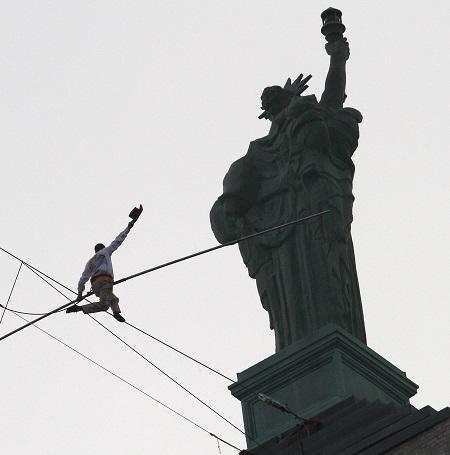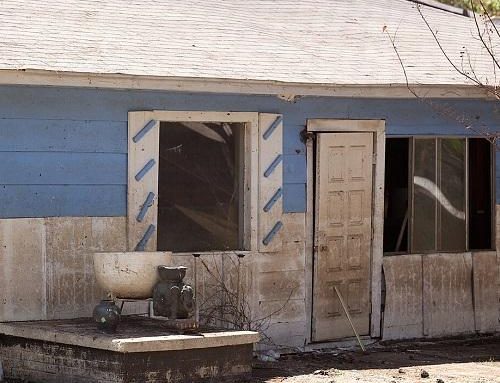According to the Occupational Safety and Health Administration (OSHA), falls are the leading cause of death in the construction industry, accounting for approximately 35% of all construction fatalities. Even with the proper safety measures in place, falls can still occur if proper fall protection practices are not followed. In fact, OSHA reports that fall protection is one of the most frequently cited standards, with thousands of violations each year. To ensure the safety of workers, it is essential to understand and avoid the most common bad practices in fall protection.
In light of the alarming statistics on injuries and deaths related to improper fall protection practices, it is crucial for workers and employers to understand the importance of fall protection and how to properly use and maintain equipment. In this article, we will explore the top 10 bad practices to avoid in fall protection in order to ensure the safety of all workers. By understanding and avoiding these common mistakes, we can work towards reducing the number of falls and injuries in the workplace:
- Not using fall protection at all. One of the most obvious bad practices in fall protection is not using it at all. Many workers and employers believe that fall protection is not necessary for the type of work they are doing or that it is too cumbersome to use. However, fall protection is essential for any work done at heights, regardless of the type of work. Falls from heights are one of the leading causes of serious injury and death in the workplace. By not using fall protection, workers are at serious risk of injury or death. Employers should ensure that fall protection is used for any work done at heights and that workers understand the importance of using it.
- Not properly inspecting fall protection equipment. Before each use, fall protection equipment should be inspected to ensure that it is in good working condition. This includes checking for wear and tear, ensuring that all components are properly attached, and that the equipment is not past its expiration date. Failure to properly inspect equipment can lead to equipment failure and put workers at risk. Employers should establish a regular schedule for inspecting fall protection equipment and ensure that workers are trained on how to properly inspect it. It’s also important to keep records of the inspection, as well as any repairs or maintenance performed, in case of future audits.
- Not using the right type of fall protection. Not all fall protection equipment is suitable for every type of work. It’s important to choose the right type of fall protection equipment for the specific work being done. For example, a personal fall arrest system should be used when working on a roof, while guardrails should be used when working on a scaffold. Using the wrong type of fall protection equipment can lead to equipment failure and put workers at risk. Employers should ensure that they understand the different types of fall protection equipment available and choose the one that is most appropriate for the work being done. They should also consult with fall protection experts and manufacturers to ensure that they are using the right equipment for the job.
- Not properly attaching fall protection equipment. Fall protection equipment must be properly attached to an anchor point to ensure that it will function correctly in the event of a fall. Workers should be trained on how to properly attach and detach fall protection equipment, and employers should ensure that workers are following proper procedures. Improperly attached equipment can lead to equipment failure and put workers at risk. Employers should ensure that workers understand the importance of proper attachment and that they are following the manufacturer’s instructions for attaching the equipment.
- Not providing proper training. Fall protection equipment is only effective if workers know how to use it correctly. Employers should provide regular training on the proper use, inspection, and maintenance of fall protection equipment, as well as the specific hazards associated with the work being done. Workers should also be trained on the emergency procedures in case of a fall. Lack of proper training can lead to workers using the equipment incorrectly and putting themselves at risk. Employers should ensure that workers understand the importance of proper training and that they are provided with the necessary training to use fall protection equipment safely.
- Not providing the right personal protective equipment (PPE). In addition to fall protection equipment, workers should be provided with the proper PPE, such as hard hats, safety glasses, and work boots. This PPE should also be inspected before each use to ensure that it is in good working condition. Lack of proper PPE can put workers at risk and make them more vulnerable to injury. Employers should ensure that workers are provided with the proper PPE and that they are properly trained on how to use it.
- Not providing adequate fall clearance. Adequate fall clearance is essential to ensure that workers will not hit the ground or other objects in the event of a fall. Employers should ensure that workers have the proper fall clearance for the specific fall protection equipment being used. Insufficient fall clearance can lead to serious injury or death in case of a fall. Employers should ensure that workers understand the importance of adequate fall clearance and that they are provided with the necessary fall clearance for the work being done.
- Not having a rescue plan in place. In the event of a fall, it’s essential that workers are able to be rescued quickly and safely. Employers should have a rescue plan in place that includes procedures for evacuating the area and emergency personnel on standby. Workers should also be trained on the rescue plan and know what to do in case of a fall. Lack of a rescue plan can lead to serious injury or death in case of a fall. Employers should ensure that they have a rescue plan in place and that workers are properly trained on it. They should also practice the plan regularly and update it as needed. Having a well-rehearsed rescue plan can make all the difference in the event of an emergency.
- Not properly storing and maintaining fall protection equipment. Proper storage and maintenance of fall protection equipment is essential to ensure that it remains in good working condition. Employers should ensure that equipment is stored in a dry, cool place and that it is inspected and maintained on a regular basis. Neglecting to store and maintain equipment can cause it to degrade over time, leading to equipment failure and putting workers at risk. Employers should establish a regular schedule for inspecting, testing, and maintaining fall protection equipment and ensure that workers are trained on how to properly store and maintain it.
- Not considering the weather conditions. Weather conditions can greatly impact fall protection equipment, making it difficult or even impossible to safely conduct operations. High winds, for example, can make it difficult to operate heavy machinery and can cause debris to fly around, putting workers at risk. Extreme heat can also be a hazard, as it can cause heat exhaustion and other heat-related illnesses. Rain and other inclement weather can make the site slippery, increasing the risk of slips, trips, and falls. Employers should consider the weather conditions and adjust their fall protection plans accordingly. They should also ensure that workers are trained on how to work safely in different weather conditions and provided with the necessary PPE to protect them from the elements.
Fall protection is critical for the safety of workers who work at heights. However, there are many bad practices that workers and employers should avoid to ensure the safety of workers. These include not using fall protection at all, not properly inspecting equipment, not using the right type of fall protection, not properly attaching equipment, not providing proper training, not providing the right PPE, not providing adequate fall clearance, not having a rescue plan, not properly storing and maintaining equipment, and not considering the weather conditions. Employers should be aware of these bad practices and take the necessary steps to avoid them in order to ensure the safety of their workers.










